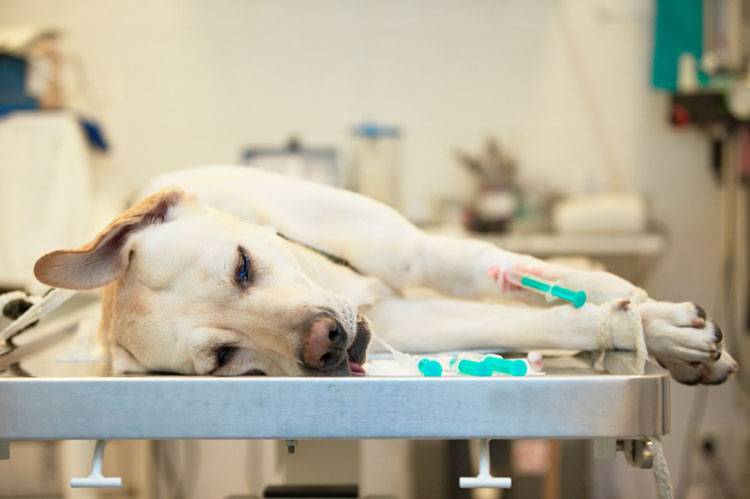Canine Liver Shunt
Overview
Normally in the fetus, the patent ductus venosus (shunt) is present. This shunt bypasses blood away from the liver to the placenta so that the blood for the fetus can be cleansed by the mother. Then, within three days after birth and once the fetus is born, the shunt closes and the puppy’s liver must clean the blood on his own.
However, there are times when the shunt does not close off. This is an abnormal blood vessel that allows the blood to bypass the liver, preventing blood to get cleansed by one of the body’s filters (the liver). This is called a liver shunt, also known as portosystemic shunt.
Types of Shunts
There are different types of liver shunts. Two of the main ones are known as intrahepatic shunt (inside the liver) and extrahepatic shunt (outside the liver). The intrahepatic shunt is commonly found in large dog breeds and tends to be much more difficult to operate. The extrahepatic shunt is usually easier to operate on and commonly found in small breeds.
Portosystemic Shunt Symptoms
A few clinical signs of portosystemic shunt include abnormal behavior after eating, pacing and aimless wandering, head pressed against the wall or constant rubbing of his head (the blood not being filtered causes ammonia buildup, which makes his head feel funny), and constant illnesses (since the liver is not filtering the blood, it causes toxicity in the blood, making your dog constantly ill).
Episodes of apparent blindness, low weight gain, bad mouth odor (young pets should have good breath), lethargy, laziness, decrease in appetite, crystals in the urine (this is from the excess ammonia) and UTIs are also symptoms of a liver shunt. Some dogs may show several clinical signs while others only show one. Furthermore, some dogs may not start showing any signs until they’re older.
RELATED: How to Prepare Your Dog for Vet Visits
How to Diagnose Liver Shunts
There are a variety of tests that could be done to diagnose a liver shunt. An ultrasound can help identify the shunt. Blood tests can also help support this diagnosis. However, the most common test used to identify a liver shunt is a bile acid test.
Treatment for Portosystemic Shunt
Medical Management
Depending on what type of liver shunt he has, medically managing your dog’s liver shunt is one treatment option. You’ll have to determine if the shunt is intrahepatic or extrahepatic, which a scintigraphy can determine.
Surgery
Surgery is normally the best option, as it has an overall success rate of 85. If your dog undergoes surgery, he’ll need to be as stable as possible. To do this, put your dog on a low protein diet and prescription medication, such as antibiotics and lactulose.
Protein promotes toxicity while the antibiotics are used as bacteria to circulate in the blood. Normally it’s removed by the liver, but in this case, it’ll bypass the liver. Giving your dog lactulose may also help. At first, this may cause diarrhea, but then it’ll immediately help detoxify your pet’s system.
After surgery, your dog may be in some pain for a few days. Within the next four months, you’ll begin noticing weight gain, muscle development, improvement in general appearance, more energy and no more head rubbing. It’s recommended you have another bile acid test done after four months to check on your dog’s surgery status. If the test results are normal, then you can put your pet back on regular food.
Sources:
www.petplace.com
You may also like: Epilepsy in Dogs





